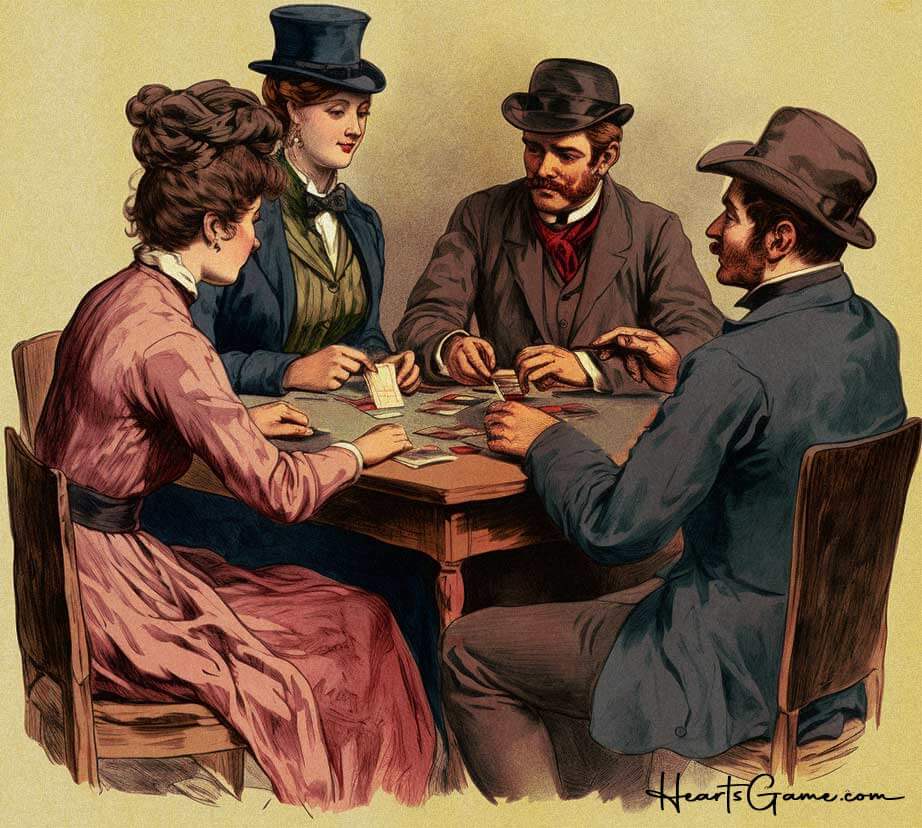The Fascinating History of the Hearts Card Game
Hearts, a beloved card game full of strategy and wit, has a rich history that spans centuries and continents. From its early beginnings to its modern digital form, Hearts has captivated players of all ages. This article explores the journey of this classic game, highlighting its evolution, variations, and enduring popularity.
The Early Beginnings

Hearts likely originated from Reversis, a popular card game in 18th-century Spain. Reversis set the foundation for Hearts with its penalty points system, specifically involving the Jack and Queen of Hearts. Another significant ancestor was the French game Quadrille, which contributed further elements to the evolving structure of Hearts.
Hearts Takes Shape in America
The game as we know it today began to take shape in the United States during the 1880s. Described in the 1887 Standard Hoyle as a "pleasant game, highly provocative of laughter," Hearts was a no-trump, trick-taking game designed for four players. The objective was to avoid winning tricks with heart cards. This basic format has remained largely unchanged, testament to its well-conceived design.
The Evolution of Scoring and Rules
Two significant scoring variants, known as the 'Double or Eagle Game', were introduced in the early versions of Hearts. The first, a precursor to Spot Hearts, assigned chip values to the heart suit cards, while the second variant used a different scoring scheme. In 1909, the Queen of Spades was added as a high penalty card, in a version initially known as "Discard Hearts" or "Black Lady." This variant, especially the inclusion of the Queen of Spades, became a defining feature of modern Hearts.
Hearts Across the Atlantic
In Britain, different versions of the game emerged, including Black Maria and Omnibus Hearts, each with unique rules and additional penalty cards. The most notable feature, "shooting the moon," first appeared in a British variant called Hitting the Moon in 1939. This challenging and risky move added a new strategic dimension to the game.
The Digital Age and Global Popularity
The advent of the digital age marked a pivotal chapter in the history of Hearts, transforming it from a traditional card game into a global online phenomenon. The inclusion of Hearts in Microsoft Windows operating systems, beginning with Windows 3.1 and continuing through to Windows 7, played a monumental role in this transformation. This digital version of the game, essentially the Black Lady variant, introduced millions of computer users worldwide to the game, many of whom had never played or even heard of it before. It became a staple for casual gaming, offering a quick and engaging break for people of all ages.
The rise of the internet further accelerated the game's popularity. Online gaming sites began offering Hearts, attracting a diverse group of players from across the globe. These platforms broke down geographical barriers, allowing people from different countries and cultures to play together. This connectivity not only increased the game's reach but also enriched the playing experience, introducing players to new strategies and styles of play.
Where Is the Game Now?
Today, Hearts continues to be a beloved game, appealing to a wide range of players. Its simple yet deep strategic elements make it accessible and challenging, a combination that has allowed it to endure through the ages. As technology evolves, so does the medium through which the game is played, but the essence of the game remains unchanged.
The history of Hearts is a testament to the enduring appeal of card games. It showcases how a simple game can evolve, adapt, and thrive across different cultures and technological advancements. Hearts stands not just as a game but as a symbol of strategy, camaraderie, and the timeless joy of playing cards.